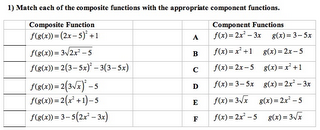
This is the final lesson of the unit, aside from review and the test. The objective is for students to apply their understanding of graphical representations to be able to solve inequalities and equations.
After reviewing the homework, students will work on a Do Now worksheet with a graph of a parabola and some dotted horizontal and vertical lines. They are asked to use the graph and the lines to solve equations and inequalities.
Following this, there will be some direct instruction on solving graphically. The idea I want to present is:
To solve an equation or inequality graphically:
a) Write each side of the equation/inequality as a function
b) Graph the functions
c) Find the intersection point(s) (and draw dotted vertical “helper” lines)
d) Determine the part of the domain that solves the initial problem
We will review the absolute value problems they solved in the first unit (i.e. |x + 3| > 4), solving them graphically. I will also show them how to find points of intersection on the TI-83+. We will compare solving these graphically to solving them algebraically. Hopefully, students will see that a "less than" inequality makes a "sandwich" graph on the number line because the tip of the V is dipping below the horizontal line (does that make sense?). A "greater than" inequality makes a "gap" graph on the number line because the tops of the V go above the horizontal line to the left and right of the points of intersection.
After direct instruction, students will work independently to practice these concepts. The homework includes solving quadratic equations/inequalities in the same way. Students will also review for the third quiz (on this, plus translation and transformation of functions).








